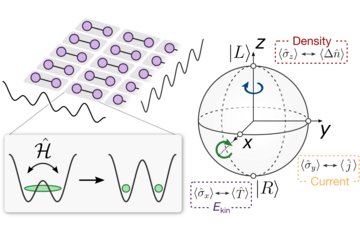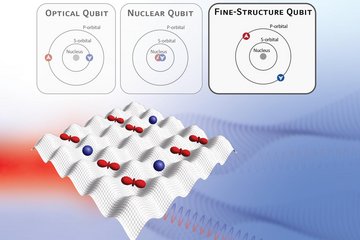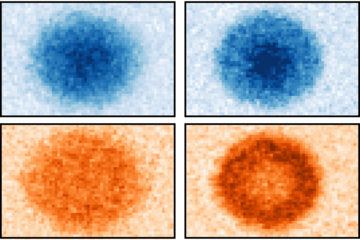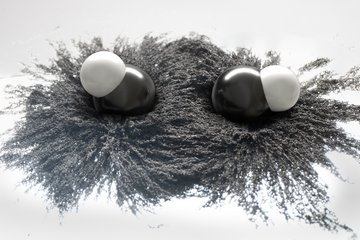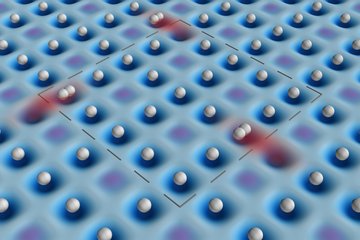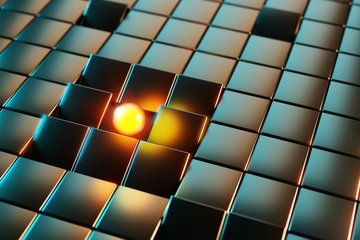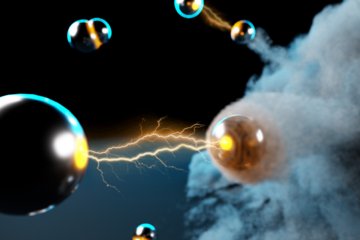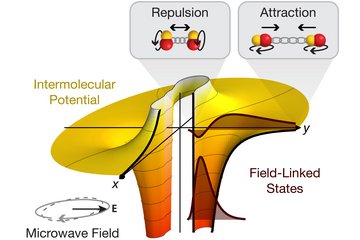Real-space detection and manipulation of topological edge modes with ultracold atoms
A glance at edge modes

An international team from the Ludwig-Maximilians-University Munich and the Max-Planck Institute for Quantum Optics recently observed and manipulated the peculiar states emerging at topological boundaries, the so-called edge modes. The results are featured in Nature Physics. Topological materials, in contrast to "ordinary" materials host edge modes which enable dissipation-free transport along the system's boundary. The transport enabled by the edge mode is robust to imperfections of the crystal and small variations of the system parameters - it is topologically protected.
This protection of the edge mode is intriguing, as small variations in the system do not alter the conductance of the edge mode, a phenomenon famously observed in the quantum Hall effect and used in the redefinition of the International System of Units (SI) units in 2019. Directly observing this edge transport is intriguing, as the presence of the edge mode directly tells if the system is in a topologically non-trivial regime and requires no knowledge of the underlying band structure. Despite clean realisations of topological systems with cold atoms, the observation of edge modes with cold atoms so far remained elusive. The team led by Monika Aidelsburger and Immanuel Bloch, members of the cluster of excellence MCQST (www.mcqst.de), now observed these edge modes in a cold-atom experiment. Neutral potassium atoms are cooled at temperatures below one microkelvin (one millionth of a degree above absolute zero), and trapped in a honeycomb lattice made of laser light. When this lattice is kept static, the system is topologically trivial, i.e. the topological edge modes do not exist. To enter the topological regime, where the edge modes emerge at the boundary of the system, the team modulates the intensity of the three laser beams that make up the optical lattice, which makes the energy bands topological. In order to introduce a topological boundary, the team illuminates with another laser beam a selected region of the lattice. This laser beam forms a repulsive wall for the atoms blocking them from entering the bright region of the lattice. To observe the trajectory atoms undertake when launched into the lattice, the researchers catch a few hundred atoms in a tightly focused optical tweezer trap. After releasing the atoms from the tweezer, they are mostly located on a single site of the optical lattice, and they can evolve freely in the honeycomb potential. When initialized close to the wall, the atoms move along it without exploring the empty lattice and the direction of their motion can be controlled by the modulation. This behaviour is similar to the one of charged particles in a magnetic field that move at the boundary of a material, such as electrons confined in a 2D plane and subject to strong magnetic fields. In such solid-state systems, the barrier is the real edge of the material. The exceptional control available in this cold atom experiment enables tunability of the height and sharpness of the repulsive wall, which led to the first direct observation of the emergence of an edge mode as the wall is gradually raised. Moreover, by controlling the width of the wall, the researchers were able to demonstrate a reduction of the edge-mode velocity by making the wall smoother. In the future, the team will use this new tool to study the interplay between topology and disorder. To this end, random obstacles will be added to their extremely regular honeycomb lattice to investigate how disorder can hinder or facilitate the topological transport of matter.
“We can benefit from an unprecedented control over the parameters offered by this quantum simulation platform. Similar control so far is out of reach in their solid-state counterparts and allows us to explore yet-unanswered questions of topological phases of matter even in regimes that do not have any solid-state counterpart”, Monika Aidelsburger says.
To learn more about our recent publication, please visit Nature Physics.

